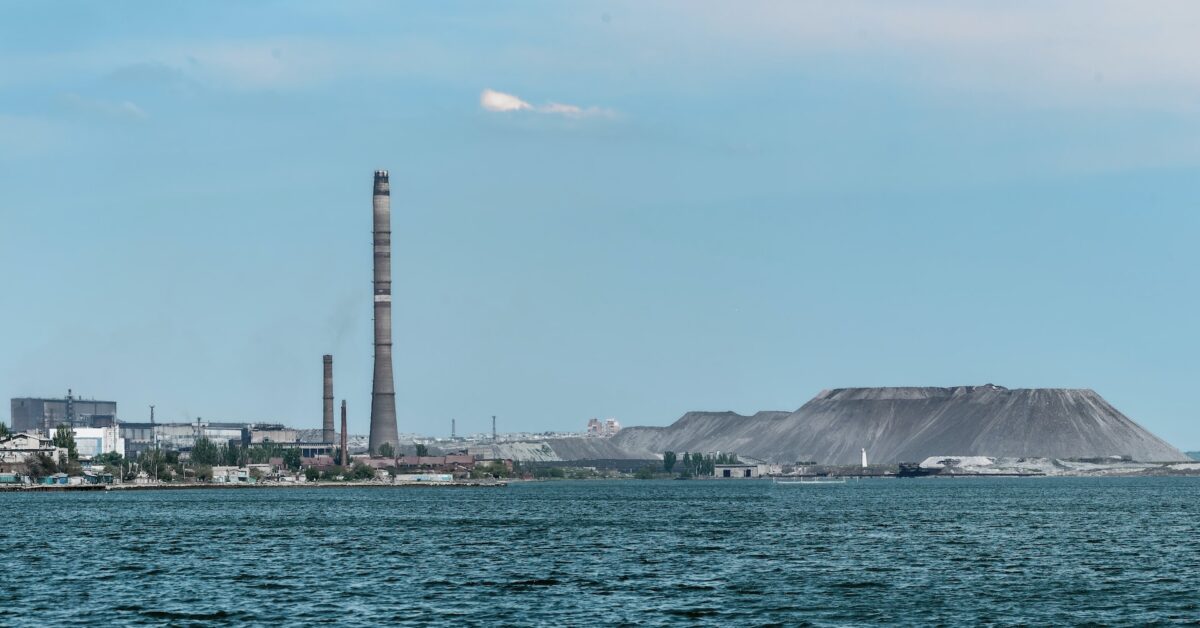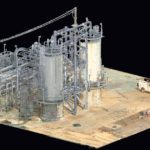Most of us know that the oil and gas industry is a vast-reaching resource that provides a significant portion of the world’s energy needs. This industry encompasses the exploration, extraction, production, and distribution of crude oil and natural gas resources.
Engineers play a crucial role in each sector of the oil and gas industry from beginning to end, where they work in a range of fields spanning from drilling to pipeline engineering. In the exploration phase, engineers use advanced technologies like seismic surveys, well logging, and geostatistics to locate potential oil and gas reserves.

via Unsplash
Once a reserve is found, drilling engineers use specialized equipment and techniques to extract the resources from the ground. Reservoir engineers determine how much oil and gas can be recovered and how to optimize the production process.
The production phase involves the transportation of oil and gas from the well site to processing facilities. Pipeline engineers design and construct the pipelines and infrastructure necessary for the safe and efficient transport of oil and gas.
Arguably the most important responsibility of engineers that work within the oil and gas industry is maintaining and sustaining health and safety in structures. Engineers in the oil and gas industry face significant challenges, like managing complex and hazardous processes, minimizing environmental impact, and ensuring the safety of workers and communities.
Despite these challenges, engineers in the oil and gas industry continue to innovate and develop new technologies that drive the industry forward and contribute to the world’s energy security.
Current State of the Oil and Gas Industry
Today, the oil and gas industry operates on a global scale, with major players from various countries involved in exploration, production, and distribution. Advances in technology have allowed for the extraction of oil and gas from challenging locations like deep-sea reserves and unconventional sources like shale gas.
However, the industry faces increasing pressure to transition towards a cleaner and more sustainable way of doing things. Because of this, in the future, the industry is likely to see large disruptions and changes being brought about.
This may lead to the obsolescence of certain practices and technologies used in the industry today. For example, the demand for oil and gas may decrease as electric vehicles become more widespread, and traditional oil and gas companies may need to pivot toward investing in renewables.
How Technology Will Affect the Future of Oil and Gas
As technology changes and improves, so does the engineering field, and in turn, so does the oil and gas industry. Emerging technologies have the potential to increase efficiency, improve safety, and reduce costs in the exploration, extraction, production, and distribution of oil and gas resources.
One area where technology is already making an impact is in the use of automation and robotics in the industry. Automated drilling systems and remote-controlled machinery are reducing the need for human intervention in hazardous or difficult environments, improving safety and reducing costs.
Another area where technology is expected to make a significant impact is in the development of renewable energy sources, such as wind and solar power. As the demand for clean energy continues to grow, the oil and gas industry is likely to shift towards investing in and developing these technologies to remain competitive.
New technologies will be at the forefront in shaping the future of the oil and gas industry. They will be critical for companies in this sector to adapt and incorporate emerging technologies to remain relevant in an evolving energy landscape.
How AI Will Affect the Future of Oil and Gas
Artificial intelligence (AI) is one type of technology with a huge opportunity to unlock efficiencies in the oil and gas industry. One area where AI is already being used is in reservoir management.
AI algorithms can be used to analyze seismic data and other geological information to identify potential oil and gas reserves more accurately. This allows engineers to optimize production and maximize recovery rates.
From initial exploration in drilling operations to through to production, AI has the potential to transform how the oil and gas industry operates. Companies that invest in AI technology are likely to see improved efficiency, reduced costs, and increased safety in their operations.
The use of AI is likely to become increasingly widespread in the industry, with companies embracing this technology to remain competitive in an evolving energy landscape.

via Unsplash
What Does the Future of the Offshore Oil and Gas Industry Look Like?
The future of the offshore oil and gas industry is likely to be shaped by a combination of technological advancements, changing demand, and environmental concerns. There are a number of possible opportunities and outcomes that will come out of the changing landscape of the offshore oil and gas industry.
Increasing Automation
As the technology for autonomous drilling and production becomes more advanced, the need for human intervention in offshore operations may decrease, leading to increased safety and efficiency in the industry.
Shifting Toward Renewable Energy Sources
The demand for clean energy is increasing, and the offshore oil and gas industry may need to shift towards investing in renewable energy sources such as offshore wind farms. Some oil and gas companies are already diversifying their portfolios to include renewables, and this trend is likely to continue.
Introducing More Stringent Environmental Regulations
Environmental concerns are growing, and governments may impose more stringent regulations on offshore oil and gas operations. Companies may need to invest in technologies that reduce their environmental impact or risk losing their licenses to operate.
Starting Smaller, More Specialized Operations
As the easily accessible reserves become depleted, the offshore oil and gas industry may need to shift towards smaller, more specialized operations. This could lead to more collaboration between companies as they pool their resources to extract the remaining reserves.
New Technologies in Oil and Gas Production
Both the engineering field and the oil and gas industry are constantly improving and innovating. Technology helps these industries and their experts with new ways to approach emerging problems.
Advanced Seismic Imaging
Advanced seismic imaging techniques use sophisticated sensors and computer algorithms to create detailed, high-resolution images of the subsurface. This technology allows for more accurate identification of oil and gas reserves, reducing the risk of drilling in the wrong location.
Intelligent Wells
Intelligent wells use sensors and data analytics to optimize oil and gas production in real-time. These wells can automatically adjust their flow rates and injection pressures to maximize production and minimize downtime.
Robotics and Automation
Robotics and automation are increasingly being used in oil and gas production to improve safety and efficiency. Remote-controlled drilling and production equipment can be operated from a safe distance, reducing the risk of accidents and injuries.
Digital Twins
Digital twins are virtual replicas of physical assets, such as oil rigs and wells. Digital twins allow engineers to monitor and analyze the performance of assets in real-time, reducing downtime and minimizing maintenance costs.
How Has the Internet of Things Changed the Oil and Gas Industry?
The Internet of Things (IoT) is an extremely valuable resource for the oil and gas industry. It enables companies to collect and analyze data in real-time, which improves efficiency, safety, and environmental performance.
Remote Monitoring
IoT sensors can be installed throughout the oil and gas production process, allowing engineers to monitor operations remotely. This helps to identify potential issues before they become critical, reducing downtime and improving safety.
Predictive Maintenance
IoT sensors can also be used to monitor equipment performance in real-time, predicting potential equipment failures before they occur. This allows for maintenance to be scheduled in advance, reducing downtime and maintenance costs.
Asset Management
IoT sensors can be used to track assets such as pipelines, valves, and tanks, providing real-time information on their condition and location. This information helps companies to optimize maintenance schedules, reduce equipment failures, and prevent environmental damage.
Environmental Monitoring
IoT sensors can be used to monitor environmental factors such as air and water quality, enabling companies to comply with regulations and reduce their environmental impact.
Supply Chain Management
IoT sensors can be used to track inventory levels, shipments, and deliveries, enabling companies to optimize their supply chain operations and reduce costs.
FAQs
Will the oil and gas industry die?
Of course not! The oil and gas industry remains a vital part of the global economy, providing a significant amount of the world’s energy sources. However, change is certainly on the horizon for the field, as technology advances and we approach new environmental constraints.
What is the future of oil and gas jobs?
According to the American Petroleum Institute, nearly 1.9 million job opportunities are projected in the oil & natural gas and petrochemical industries through 2035.
What is the future of blockchain in oil and gas?
Blockchain has the potential to transform the future of the oil and gas industry in many ways, including supply chain management, royalty payments, energy trading, and reducing costs and risks in the oil and gas sector.
What kind of wearable technologies exist in oil and gas?
Wearable technologies are ever-evolving in the oil and gas industry and can include helmets, eyeglasses, watches, and “smart fabrics.”
Final Thoughts
Oil and gas is important to the world as a whole; however, the future of the oil and gas industry is likely to be shaped by technological and environmental factors. Engineers in the industry are and have always been innovators, finding creative ways to adapt to new problems presented.
To learn more about the oil and gas industry, engineering, and the innovative solutions found at the intersection of both, keep Fenstermaker in mind. We are eager to help you stay updated on how technology will continue to shape the future of engineering, and therefore, the oil and gas industry.






